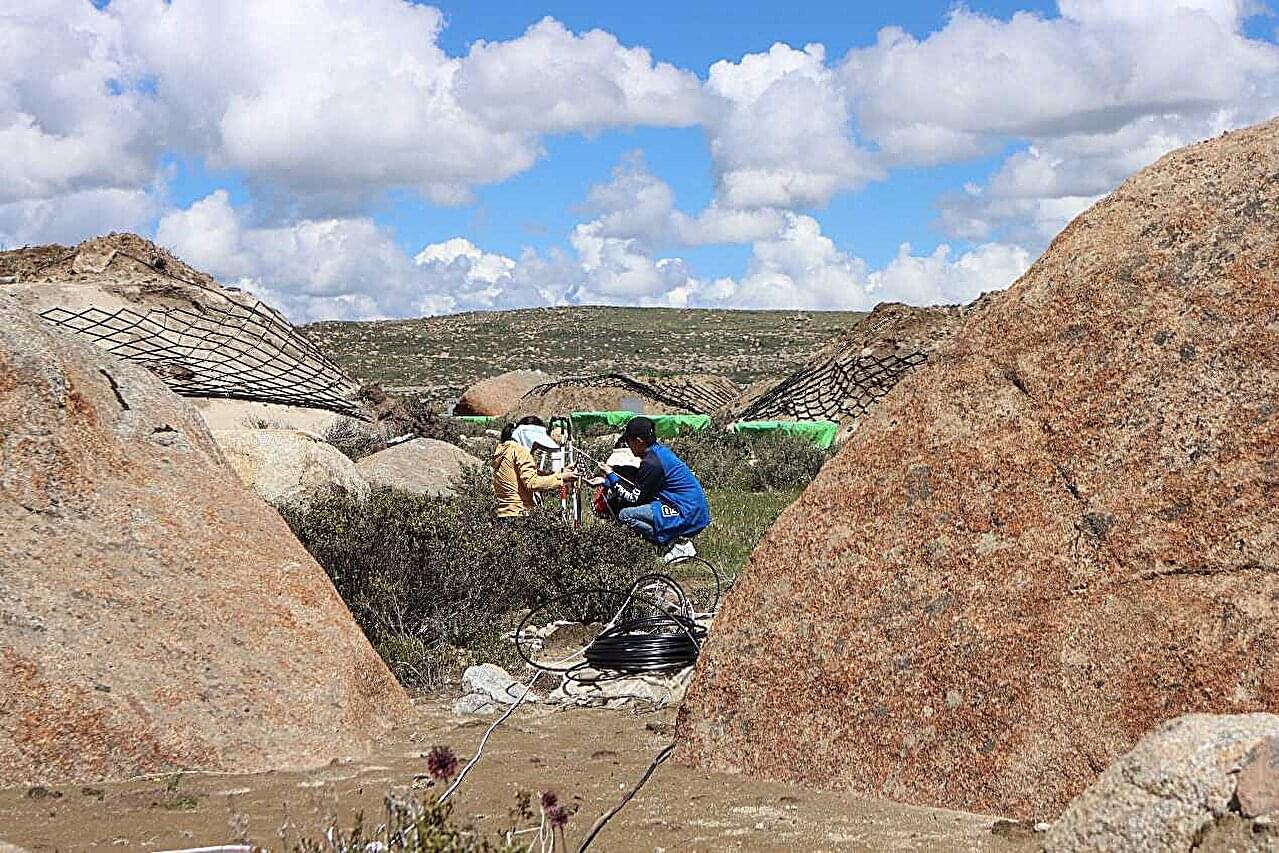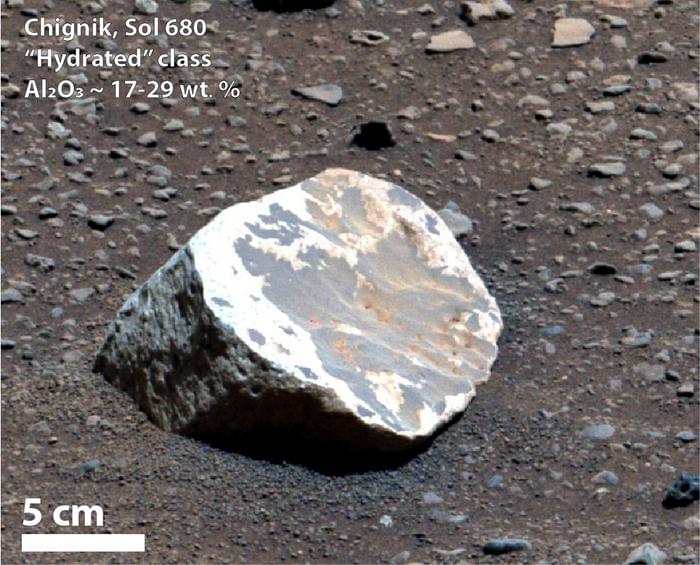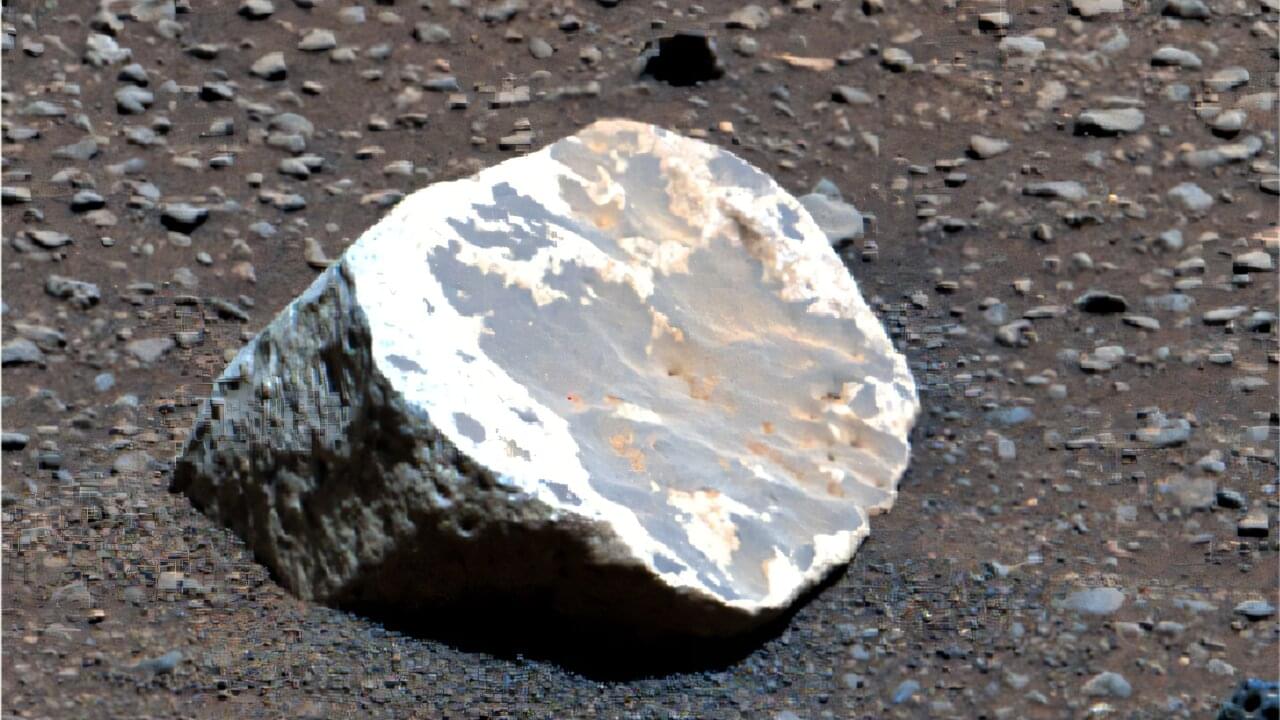How can climate change impact sleep patterns? This is what a recent study published in Environmental International hopes to address as a team of researcher | Earth And The Environment



When a gas is highly energized, its electrons get torn from the parent atoms, resulting in a plasma—the oft-forgotten fourth state of matter (along with solid, liquid, and gas). When we think of plasmas, we normally think of extremely hot phenomena such as the sun, lightning, or maybe arc welding, but there are situations in which icy cold particles are associated with plasmas. Images of distant molecular clouds from the James Webb Space Telescope feature such hot–cold interactions, with frozen dust illuminated by pockets of shocked gas and newborn stars.
Now a team of Caltech researchers has managed to recreate such an icy plasma system in the lab. They created a plasma in which electrons and positively charged ions exist between ultracold electrodes within a mostly neutral gas environment, injected water vapor, and then watched as tiny ice grains spontaneously formed.
They studied the behavior of the grains using a camera with a long-distance microscope lens. The team was surprised to find that extremely “fluffy” grains developed under these conditions and grew into fractal shapes—branching, irregular structures that are self-similar at various scales. And that structure leads to some unexpected physics.

A new study led by researchers from the Institute of Atmospheric Physics of the Chinese Academy of Sciences (CAS) has uncovered the first observational evidence of lateral negative re-discharges occurring on negative leader channels. Published recently in Geophysical Research Letters, the findings offer new insights into how lightning channels remain electrically active and how their structures evolve before and after a return stroke.
Prior to this research, negative-polarity lateral breakdowns had only been observed near the tips of positive leaders—never documented along negative leader channels.

Dr. Briony Horgan: “You need so much water that we think these could be evidence of an ancient warmer and wetter climate where there was rain falling for millions of years.”
What was Mars like billions of years ago? This is what a recent study published in Communications Earth & Environment hopes to address as an international team of scientists investigated intriguing evidence from the surface of Mars that could indicate heavy water activity existed long ago. This study has the potential to help scientists better understand ancient conditions on Mars and whether they were favorable for supporting life as we know it.
For the study, the researchers examined aluminum-rich rock fragments that were discovered by NASA’s Perseverance rover within Jezero Crater on Mars, and specifically the processes how they formed. This is because aluminum-rich clay minerals on Earth often form from heavy rainfall or other water-driven activities. Using the rover’s SuperCam and Mastcam-Z instruments, the researchers discovered the fragments—which were composed of aluminum and titanium with depleted traces of iron and magnesium—likely were analogs for heavy rainfall on Earth under greenhouse conditions. Therefore, the researchers concluded they potentially formed under intense wet conditions on Mars.

Rocks that stood out as light-colored dots on the reddish-orange surface of Mars now are the latest evidence that areas of the small planet may have once supported wet oases with humid climates and heavy rainfall comparable to tropical climates on Earth.
The rocks discovered by NASA’s Perseverance Mars rover are white, aluminum-rich kaolinite clay, which forms on Earth after rocks and sediment are leached of all other minerals by millions of years of a wet, rainy climate.
These findings were published Monday (Dec. 1) in the journal Communications Earth & Environment by lead author Adrian Broz, a Purdue University postdoctoral research associate in the lab of Briony Horgan, a long-term planner on NASA’s Mars Perseverance rover mission and professor of planetary science in the Department of Earth, Atmospheric, and Planetary Sciences in Purdue’s College of Science.

As artificial intelligence devours electricity, a quiet nuclear revolution is taking shape deep below future data centers.
Across Europe, tech firms are staring at an uncomfortable equation: soaring digital demand, power grids near saturation, and climate goals that leave little room for more fossil fuels. A young French company now claims it can rewrite that equation with a compact reactor that hides underground and feeds on nuclear waste.

Thousands of Amazon employees have signed an open letter issuing some dire warnings about the company’s move toward AI. The letter, signed by more than 1,000 workers (and counting) calls out Amazon for pushing its AI investments at the expense of the climate and its human workforce. The letter’s supporters come from a wide array of roles at the company, including many software engineers, and even employees focused on building AI systems. “We believe that the all-costs-justified, warp-speed approach to AI development will do staggering damage to democracy, to our jobs, and to the earth,” the letter’s authors wrote. It adds, “We’re the workers who develop, train, and use AI, so we have a responsibility to intervene.”
Over a thousand Amazon employees have penned an open letter, warning that the company’s rapid AI development is jeopardizing its climate commitments and human workforce. They argue the pursuit of AI dominance is leading to increased emissions, water scarcity, and job displacement, urging leadership to prioritize ethical AI and environmental responsibility.


When describing collective properties of macroscopic physical systems, microscopic fluctuations are typically averaged out, leaving a description of the typical behavior of the systems. While this simplification has its advantages, it fails to capture the important role of fluctuations that can often influence the dynamics in dramatic manners, as the extreme examples of catastrophic events such as volcanic eruptions and financial market collapse reveal.
On the other hand, studying the dynamics of individual microscopic degrees of freedom comprehensively becomes too cumbersome even when considering systems of a moderate number of particles. To describe the interface between these opposite ends of the scale, stochastic field theories are commonly used to characterize the dynamics of complex systems and the effect of the microscopic fluctuations.
Due to their overwhelming complexity, predicting outcomes by analyzing these fluctuations in living or active matter systems is not possible using traditional methods of physics. Since these systems persistently consume energy, they exhibit dynamical traits that violate the laws of equilibrium thermodynamics, not unrelated to the arrow of time.
From the rise of numerical and symbolic computing to the future of AI, this talk traces five decades of breakthroughs and the challenges ahead.
Bill is the author of Berkeley UNIX, cofounder of Sun Microsystems, author of “Why the Future Doesn’t Need Us” (Wired 2000), ex-cleantech VC at Kleiner Perkins, investor in and unpaid advisor to Nodra. AI.
Talk Details.
50 Years of Advancements: Computing and Technology 1975–2025 (and beyond)
I came to UC Berkeley CS in 1975 as a graduate student expecting to do computer theory— Berkeley CS didn’t have a proper departmental computer, and I was tired of coding, having written a lot of numerical code for early supercomputers.
But it’s hard to make predictions, especially about the future. Berkeley soon had a Vax superminicomputer, I installed a port of UNIX and was upgrading the operating system, and the Internet and Microprocessor boom beckoned.